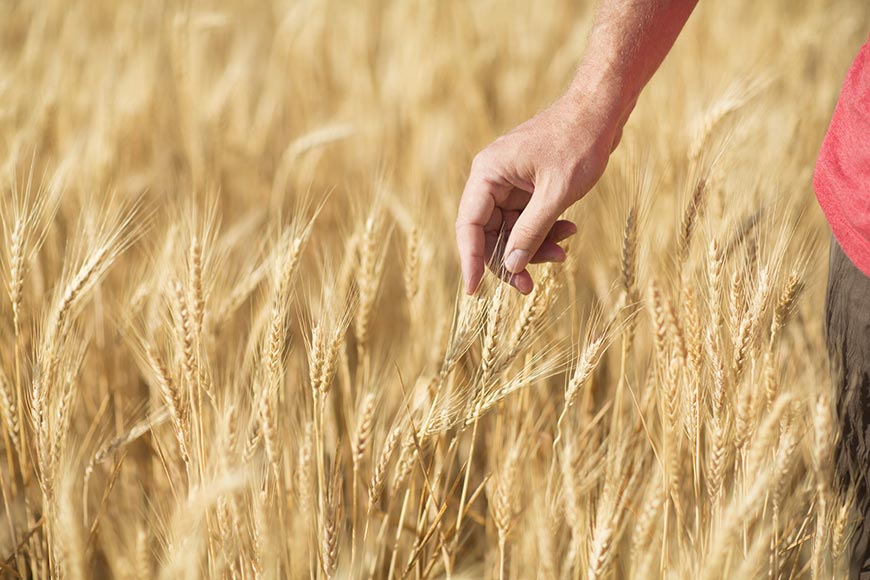Can Variable Rate Technology Improve Spring Wheat Quality?

When we harvest spring wheat, our best-looking, highest-yielding fields often lack protein. Great yields with low protein one year can lead to poor yields and high protein the next year. Many times protein levels are affected by the growing conditions we have during the season. A dry, hot growing season puts added stress on the crop and usually results in higher-than-normal protein. Whereas a wet growing season usually results in lower protein and potentially more disease issues.
Because we don’t know what kind of growing season to anticipate, managing fertility in high-protein wheat can be difficult. Fertility levels have a big effect on wheat protein levels, so you should make sure your wheat crop has the right amount of nutrients in the field, based on the anticipated number of bushels it will produce.
Customize treatments using variable rate technology
Using variable rate technology (VRT) enables you to apply the appropriate fertilizer rates on different management zones within each field, which helps increase input efficiency, optimize crop yield potential and improve overall crop quality. Since most fields within each operation can have a variety of soil types and productivity levels, VRT allows you to customize treatments to match field conditions. The key is to identify crop yield goals by zone and apply the recommended fertilizer rates to help the crop in each zone excel.
Target in-season applications to optimize quality and yield
A mid-season fertilizer side application is a common way to increase protein quality. In-season satellite imagery along with zone-based tissue sampling can help identify areas of the field that may need more nitrogen to help increase protein.
By generating a variable rate prescription based on in-season satellite imagery, you can apply fertilizer only where it’s needed to increase quality and achieve better yields. Using VRT can also potentially improve protein levels while optimizing your fertilizer investment, providing a positive effect on your ROI. In hard red spring wheat, higher protein usually means a higher price.
Each year brings different weather, crop prices and protein premiums. Whatever happens in 2017, keep your options open by maintaining your spring wheat’s quality level.
Because we don’t know what kind of growing season to anticipate, managing fertility in high-protein wheat can be difficult. Fertility levels have a big effect on wheat protein levels, so you should make sure your wheat crop has the right amount of nutrients in the field, based on the anticipated number of bushels it will produce.
Customize treatments using variable rate technology
Using variable rate technology (VRT) enables you to apply the appropriate fertilizer rates on different management zones within each field, which helps increase input efficiency, optimize crop yield potential and improve overall crop quality. Since most fields within each operation can have a variety of soil types and productivity levels, VRT allows you to customize treatments to match field conditions. The key is to identify crop yield goals by zone and apply the recommended fertilizer rates to help the crop in each zone excel.
Target in-season applications to optimize quality and yield
A mid-season fertilizer side application is a common way to increase protein quality. In-season satellite imagery along with zone-based tissue sampling can help identify areas of the field that may need more nitrogen to help increase protein.
By generating a variable rate prescription based on in-season satellite imagery, you can apply fertilizer only where it’s needed to increase quality and achieve better yields. Using VRT can also potentially improve protein levels while optimizing your fertilizer investment, providing a positive effect on your ROI. In hard red spring wheat, higher protein usually means a higher price.
Each year brings different weather, crop prices and protein premiums. Whatever happens in 2017, keep your options open by maintaining your spring wheat’s quality level.

